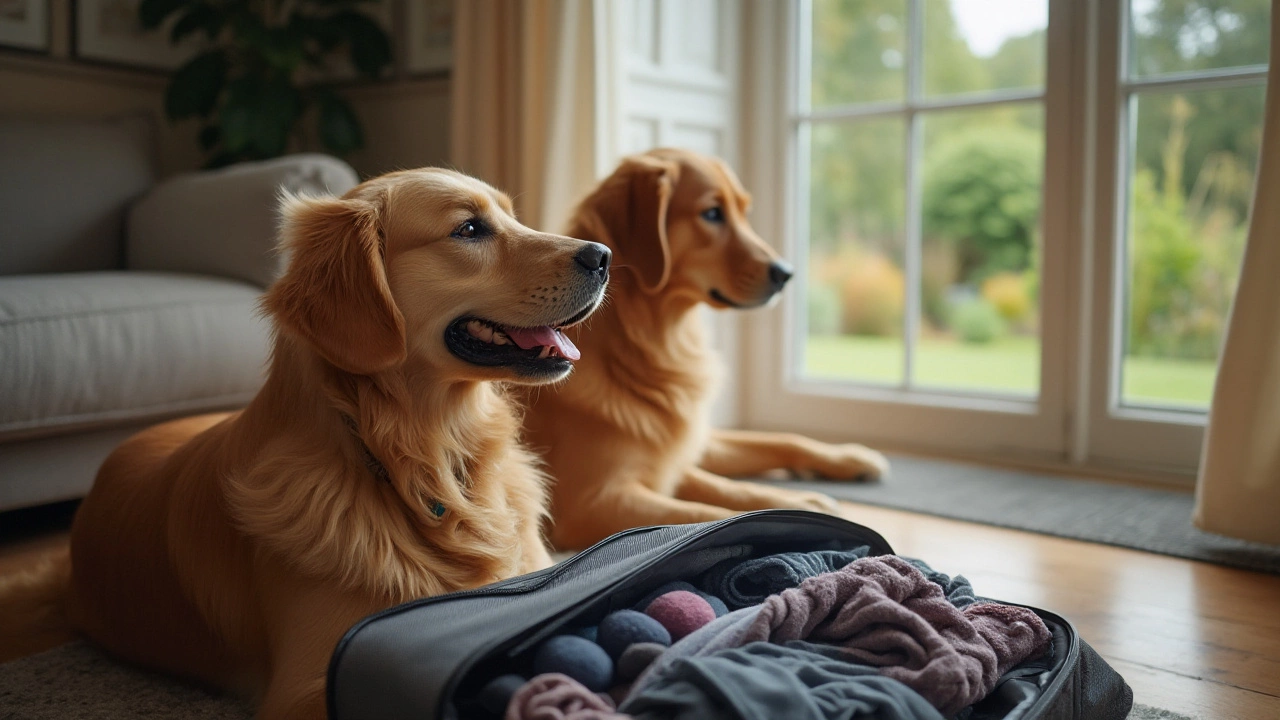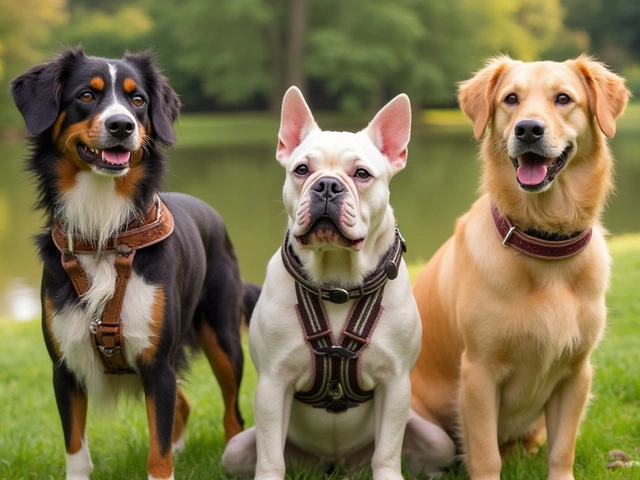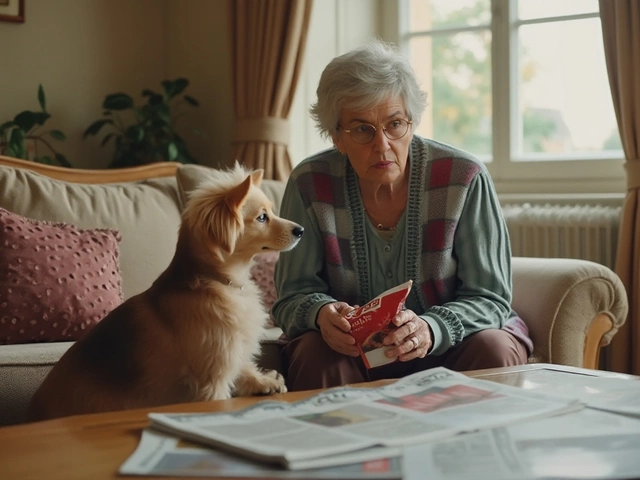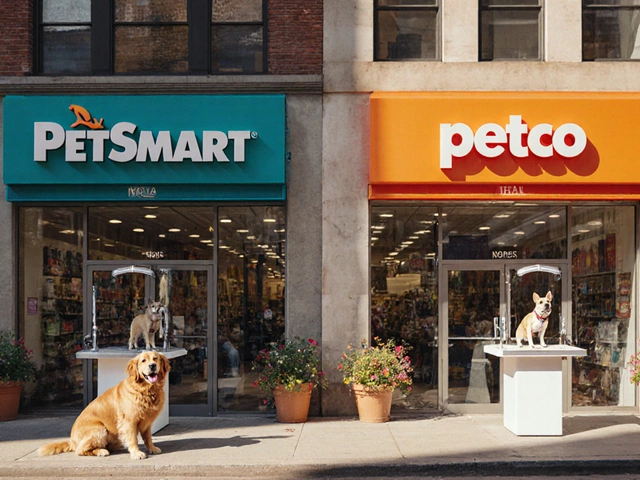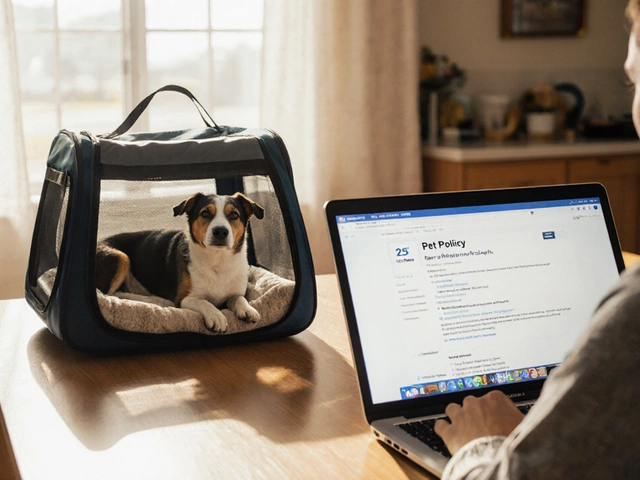Ever wondered what goes through your dog's mind as they watch you pack your bags for a getaway? It's a sight familiar to many pet owners—a pair of big, soulful eyes watching you wrap up the last-minute packing frenzy. Dogs, being the loyal companions they are, often display behaviors indicating worry that you might never return. This fear taps into the deeper emotions of canine attachment and separation anxiety.
For many dogs, the concept of time is different. Unlike humans, they don't measure minutes or hours. What they do know is the scent of your familiar presence fades with each passing moment you're away. Understanding this can help tailor travels, ensuring your furry friend's peace of mind. By taking a few thoughtful steps before embarking on a journey, you can help mitigate their anxiety and enjoy a worry-free holiday.
- Understanding Canine Attachment
- The Science of Separation Anxiety
- Signs Your Dog Misses You
- Preparing Your Dog for Travel
- Creating a Dog-Friendly Travel Itinerary
- Ensuring a Happy Reunion
Understanding Canine Attachment
Dogs have walked alongside humans for thousands of years, and during this extensive time, they've developed a remarkable bond with us. This bond, also known as canine attachment, goes far beyond mere companionship. It involves a blend of loyalty, dependence, and a unique form of affection that only our four-legged friends seem to perfectly master. Canine attachment is fundamentally different from human attachment as it is less about verbal communication and more deeply rooted in non-verbal cues, such as eye contact, scent, and presence. This bond is often strengthened through shared routines and the mutual exchange of affection.
The science behind this connection is quite fascinating. Studies show that when we share affectionate moments, both humans and dogs experience an increase in oxytocin levels—the same hormone responsible for maternal bonding. This hormonal spike is what often causes the deeply soothing sense of well-being during a cuddle session with your pooch. When you are away, dogs might feel a decrease in these calming hormone levels, which can trigger feelings akin to separation anxiety. Interestingly, dogs have been shown to be able to sense subtle changes in their human's emotional state, suggesting their attachments are complex and emotionally driven.
"Dogs are not our whole life, but they make our lives whole," a popular sentiment famously declared by Roger Caras, encapsulates the essence of canine attachment. This quote hints at the profound impact dogs have on human lives, enriching them beyond imagination. Their unwavering loyalty acts as a buffer, warding off loneliness and providing a constant source of joy, which is why their attachment is so cherished.When we speak about the emotional intelligence of dogs, it's vital to recognize their ability to form these social connections and interpret human cues. Certain breeds are particularly noted for their strong attachment inclinations, such as Golden Retrievers and Labrador Retrievers, although any dog can develop a strong bond with their human once trust and mutual respect are established. The extent of a dog's attachment often depends on its life experiences, training, and personality. For many dog owners planning trips, understanding this bond can help in tailoring the best ways to alleviate travel-induced stress for both parties.
Table data indicating the percentage of dogs experiencing separation anxiety can shed further light on the situation and inform better care strategies. A study found that approximately 20% of dogs exhibit signs of separation anxiety, which involves behaviors like excessive barking, destructive chewing, or unwanted bathroom incidents when left alone. The next time you plan a getaway, considering this attachment could mean the difference between a happy vacationer and a distressed pooch. Taking steps to ensure comfort and familiarity when you're gone—such as leaving pieces of your worn clothing or limiting the suddenness of your departures—can significantly ease these tumultuous feelings.
The Science of Separation Anxiety
Separation anxiety in dogs is more than just a term thrown around by pet owners to explain a bit of whining or barking. It's a profoundly distressing condition that affects a significant number of canine companions, leading to behavioral challenges when their human families leave them alone. It's essential to delve into the various factors contributing dog anxiety as well as understanding what happens psychologically and physiologically to a dog experiencing this state. This phenomenon is rooted in the complex social structures of dogs, and domesticated dogs still carry inherent traits of their ancestor wolves. In the wild, separation could mean potential danger or loss, as the pack ensures safety and survival.
Let's explore what occurs on a biochemical level. When a dog realizes that their owner, their primary attachment figure, is about to leave, their bodies tend to secrete stress hormones such as cortisol and adrenaline. These elevated hormone levels are what cause the cascade of anxious behaviors seen in your furry friend. Symptoms can range widely and may include barking, howling, pacing, or destructive actions like chewing furniture or attempting to escape the house. Studies conducted by the American Veterinarian Society highlight that nearly 14% of all dogs experience separation anxiety severely enough to require professional intervention. Knowing this fact underscores the importance of addressing the issue with care.
Understanding Triggers and Patterns
Triggers are key when managing separation anxiety. They can be something as minor as a tinkling of car keys, a specific time of day, or the sound of a suitcase being zipped. These actions evoke what psychologists call a "conditioned response." This means the dog has learned to associate specific signals with a stressful event. Understanding these triggers can help in devising an effective plan to comfort an anxious pet. By introducing these triggers in a non-threatening manner—such as picking up keys but not leaving the house—you can begin to desensitize your dog to these cues.
According to Dr. John Ciribassi, a board-certified veterinary behaviorist: "Dogs live in the moment. Your presence is one of the most significant factors of their world. When that certainty is disrupted, the dog panics."
The science of dog travel with dogs anxiety is also linked to genetics and early experiences. Dogs that were orphaned, weaned too early, or not socialized properly as puppies are often more likely to develop separation anxiety. Owners need to observe and understand patterns in behavior to manage and resolve issues efficiently.
Effective Interventions
Addressing separation anxiety often requires a combination of training techniques and, in some instances, medication. Counter-conditioning is one popular method where dogs are gradually taught to associate being alone with positive experiences. This could include giving them a toy stuffed with delicious treats that takes time to consume, or creating a cozy, safe space where the dog feels most comfortable. Consistency is another crucial factor—ensuring that routines are predictable and comforting helps give the dog a sense of control, even when things seem uncertain.
| Method | Description | Effectiveness |
|---|---|---|
| Counter-conditioning | Associating being alone with positive experiences. | High when done consistently. |
| Desensitization | Gradual exposure to leaving triggers without actually leaving. | Moderate to high, depending on dog sensitivity. |
| Medication | Used in conjunction with behavior modification strategies. | High for severe cases. |
It's crucial for loving pet owners to recognize signs of distress and explore methods for easing the anxiety. With informed strategies and lots of patience, you can help your dog manage these separation fears, paving the way for enjoyable and worry-free dog-friendly holidays together.
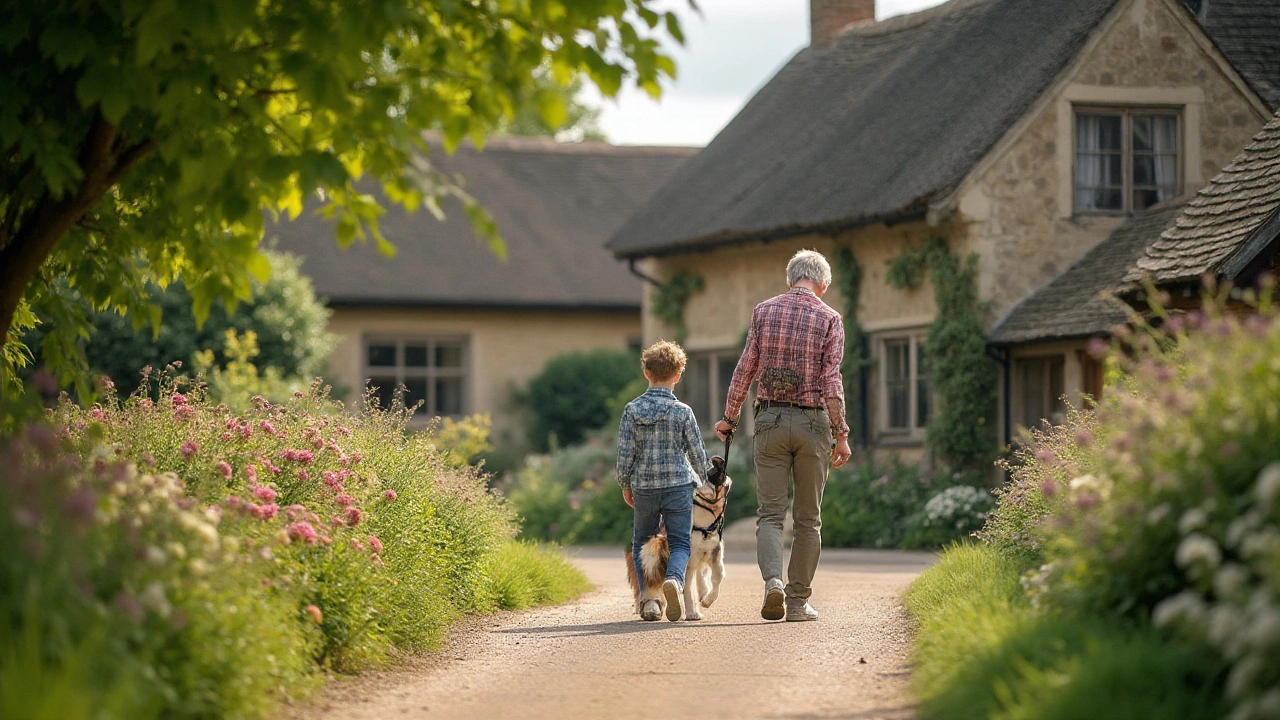
Signs Your Dog Misses You
Our canine companions have a remarkable way of expressing their emotions, and when it comes to missing their human partners, they often show it through a series of telltale behaviors. One of the most common signs is increased clinginess once you return. Your dog might follow you around the house, seeking reassurance that you're back for good. This behavior underscores their deep-seated need for your presence and reflects their anxiety rooted in separation anxiety. Dogs are creatures of habit, and any disruption to their routine, such as your absence, can cause a notable shift in their demeanor.
Another indication is vocalization. Dogs who miss their owners might start barking, whining, or howling more than usual. These vocal expressions are their way of communicating their discomfort and longing. Interestingly, some dogs resort to destructive behavior as a way to cope. Chewing on furniture, clawing at doors, or even accidents inside the home can be a dog's attempt to deal with the stress of being away from their human pack leader. As John Bradshaw, a leading anthrozoologist, remarked, "Dogs have emotional intelligence that is often underestimated, and their seemingly destructive behavior is often just a cry for attention."
You might also notice a change in their eating habits. A dog that misses you might lose interest in their food or treats, indicating a disruption in their usual appetite. Conversely, some dogs might indulge more as a way of self-soothing. Restlessness is another key sign. A dog pacing back and forth or unable to settle could very well be missing you. This behavior highlights their anxiety, as they struggle to find comfort without you nearby. You're not just their owner; you're their safe space, and your absence is felt deeply.
Additionally, dogs have a heightened sense of smell and can recognize familiar scents. They might spend a lot of time curled up in areas where your scent is strongest, like your bed or favorite chair. This habit helps them feel closer to you, offering a sense of calm amidst their solitude. Each dog is unique, and how they manifest their longing can vary. Tailored care and attention is crucial in alleviating these signs, ensuring that your pet remains secure even when you’re away.
Interestingly, data highlights that approximately 20-40% of dogs experience some form of separation anxiety, making the recognition of these signs essential for any responsible pet owner. Our travel with dogs experiences can be vastly improved for both species by understanding these emotional cues. Engaging with a local dog behaviorist for additional support might prove helpful if you observe these signs consistently. Remember, ensuring your dog's well-being starts with recognizing their unique way of communicating their needs.
Preparing Your Dog for Travel
Before setting off on your dog-friendly adventure, it’s essential to ensure that your furry friend's journey is just as enjoyable and stress-free as your own. Traveling can be an overwhelming experience for dogs, especially if they are not accustomed to changes in their environment. One of the first things to consider is gradual acclimatization. Begin by introducing them to car rides with short, enjoyable trips around town. Offer plenty of positive reinforcement to create a positive association with travel. Building this familiarity can significantly reduce travel anxiety and transform them into comfortable travel companions.
Establishing a secure and cozy travel environment is also crucial. Whether traveling by car or plane, a well-designed crate or carrier can help your dog feel safe. Ensure that the crate is spacious enough for them to stand, turn around, and lie down comfortably. Carriers should be well-ventilated, and airlines typically have specific size requirements, so it's wise to check these well in advance. Make sure your dog has their favorite blanket or toy inside, providing comfort and the scent of home.
Hydration and nutrition are pivotal components of travel preparation. Always have a travel water bowl and fresh water available to keep your dog hydrated throughout the journey. Pack a portion of their usual kibble, keeping feeding routines as normal as possible to minimize stress. It’s also worthwhile noting that feeding your dog a heavy meal right before a trip is not advisable, as it can lead to motion sickness.
Cesar Millan, a renowned dog behaviorist, once said, "Dogs perceive the world through routines. Changing those routines shouldn't be sudden but gradual." His wisdom highlights the importance of establishing travel-related routines ahead of departure. Dog-friendly holidays should be planned with as much thought to your pet's schedule as to your own.Consider a visit to the vet as an essential pre-travel checklist item. Verify that all vaccinations are current and discuss any additional health precautions pertinent to your travel destination. If your dog is prone to motion sickness or anxiety, your vet may recommend specific treatments or strategies to make traveling easier. Microchipping your dog is also a smart move as it adds an extra layer of security in case they get lost during the trip.
Travel with dogs is always easier when you've packed the essentials. Assemble a travel kit with items like poop bags, grooming tools, a first aid kit, and your dog’s medical record. Keeping such essentials on hand guarantees quick response to any situation. Additionally, it might help to include a list of emergency contacts for vets in the area you are visiting.
Travel Preparation Item Details Crate Spacious, well-ventilated, airline-compliant Nutrition Usual kibble, travel water bowl Health Check Vet visit, vaccination check Security Microchip, collar ID By preparing diligently, you can ensure that your dog anxiety diminishes, leaving them happier and more secure during your travels. These preparations allow you to focus on creating beautiful memories together rather than worrying about what might have been overlooked.
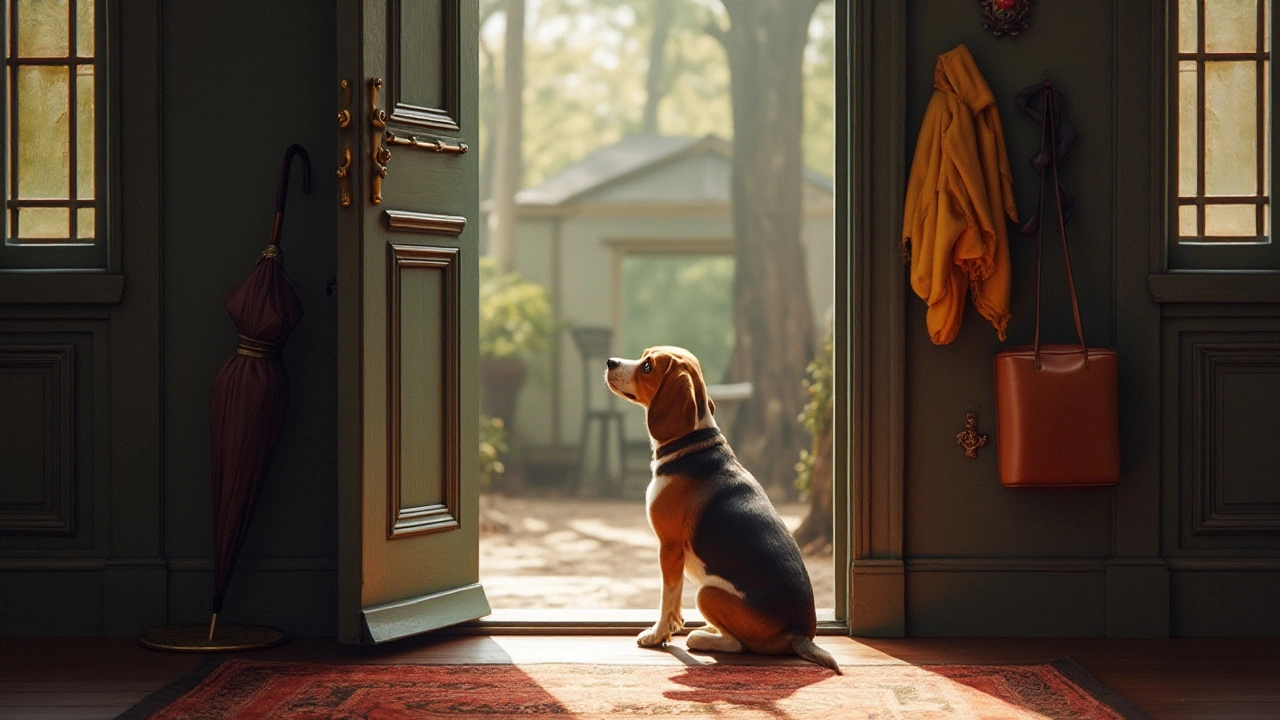
Creating a Dog-Friendly Travel Itinerary
Planning a trip that both you and your furry friend will enjoy can seem daunting at first, but with careful preparation, it becomes a rewarding experience. The key to a successful dog-friendly vacation lies in building an itinerary that considers the needs of your dog, aligning these with your own leisure goals. Start by researching destinations that are known for their pet-friendly amenities. Cities like San Francisco, Amsterdam, and Sydney boast a wealth of parks, beaches, and cafes that welcome dogs, offering a seamless integration of your companion into holiday activities.
When crafting your itinerary, prioritize accommodations that cater to guests with pets. Pet-friendly hotels may provide special amenities such as dog beds, food bowls, and treats. Websites like BringFido.com or PetsPyjamas.com are excellent resources for finding and booking dog-friendly places to stay. Also, consider the travel logistics—choose airlines that specialize in pet-friendly policies and read reviews from other travelers to gather insights into what to expect. This can significantly reduce potential stress for your dog during the journey.
Another important factor is transportation. If you plan to drive, make frequent stops to give your dog the opportunity to stretch and relieve themselves. For plane travel, ensure your airline offers a safe environment for pets and plan breaks where you can walk your dog at layover airports. Once you finalize your travel details, focus on the daily itinerary. Include activities that your dog will enjoy, like visits to dog parks or beach strolls, balanced with your own interests, ensuring that both of you have enjoyable experiences each day.
Additionally, it’s crucial to pack accordingly for your dog's comfort and well-being. A detailed packing list should include essentials such as collapsible bowls, an ample supply of your dog’s regular food to avoid digestive issues, medication if needed, and a favorite toy or blanket. A well-prepared pack can alleviate anxiety by surrounding your dog with familiar scents and flavors. Make note of nearby veterinary clinics at your destination in case of emergencies; this proactive measure is a testament to diligent planning.
Dog-friendly holidays offer unique bonding experiences for you and your pet, an opportunity to create lasting memories. Keeping a flexible mindset is also key—be ready to adjust plans based on your dog’s comfort and mood. A well-traveled dog is often a happy dog, more resilient to the rigors of travel and enriched by new sensory experiences. Ultimately, the objective is to balance adventure with your dog’s assurance that their needs are prioritized and a cherished companion in your travel tales.
Ensuring a Happy Reunion
Coming back to your canine companion after a trip is one of the most heartwarming experiences for any pet owner. The enthusiastic tail wags, high-pitched barks, and that familiar lean against your leg are more than just welcome signs—they are affirmations of the emotional bond you share, a link that doesn't fade with your absence. But ensuring that this reunion is as joyous and stress-free as possible for both you and your dog requires understanding and practice.
As you return home, remember that your dog might need a moment to adjust, especially if their routine was altered during your absence. It's important to take things slowly. For some dogs, the initial excitement can quickly turn into overwhelming energy. To help calm this transition, consider engaging in a familiar activity, like a short walk or a gentle cuddle session, reconnecting through the everyday rituals that bring your dog comfort.
Another tip is to leave something behind that carries your scent when you depart—an old shirt or towel, perhaps. This can provide a reassuring presence in your absence, making the eventual reunion smoother. Upon your return, maintain a calm and composed demeanor. Your pet is highly perceptive to your emotional state, and a relaxed owner encourages a relaxed dog.
Integrating Routine Quickly
Once the initial joy of seeing each other again settles, it's crucial to reintegrate your dog back into their daily routine. This repetition and predictability are comforting to dogs. If your pet missed their favorite walk routes or playtimes, make sure to reintroduce these activities. A quick tip: high-energy play can sometimes help dissipate any leftover anxiety or stress they might have experienced during your away time.
"Dogs thrive on routine—a sense of predictability helps them feel safe and secure," notes canine behaviorist Dr. Karen Overall.It's also worth noting the importance of continued socialization following your return. Use this time to increase their interaction with other dogs and humans. Try scheduling playdates or attending a nearby dog park, creating happy, non-stressful scenarios where your dog can interact and flourish. It helps significantly if you gradually return to your prior routine too, as drastic changes could lead to behavioral challenges.
Lastly, remember that a slower-than-expected reintegration doesn't necessarily signal a problem. Every dog is unique—watch for signs of comfort and adapt as necessary. A study published by the Journal of Veterinary Behavior suggests that dogs with previously demonstrated behaviors of separation anxiety may require a longer adjustment period post-reunion. So patience, meticulous observation, and a compassionate understanding of your dog's needs are key elements of ensuring a truly happy and fulfilling reunion.
